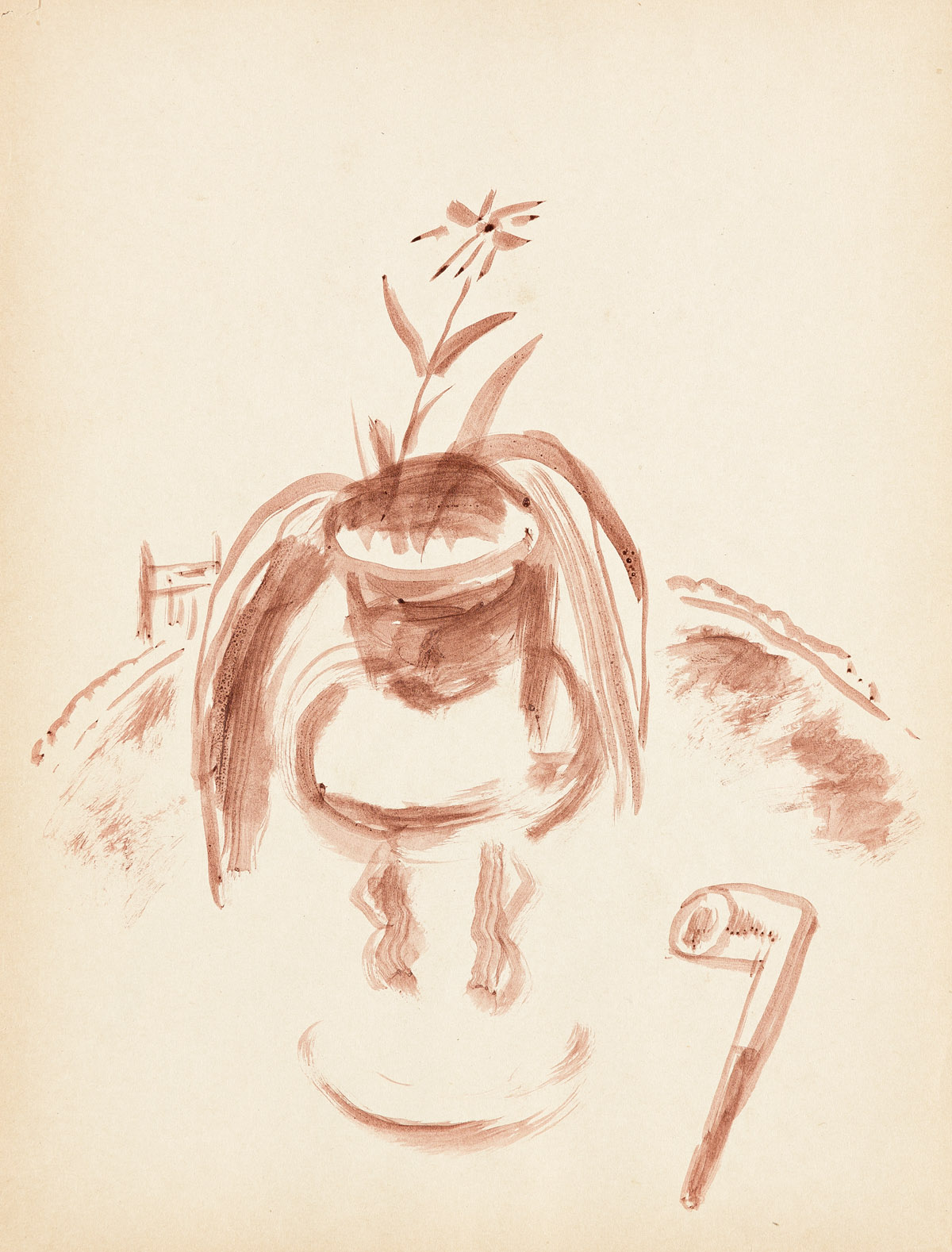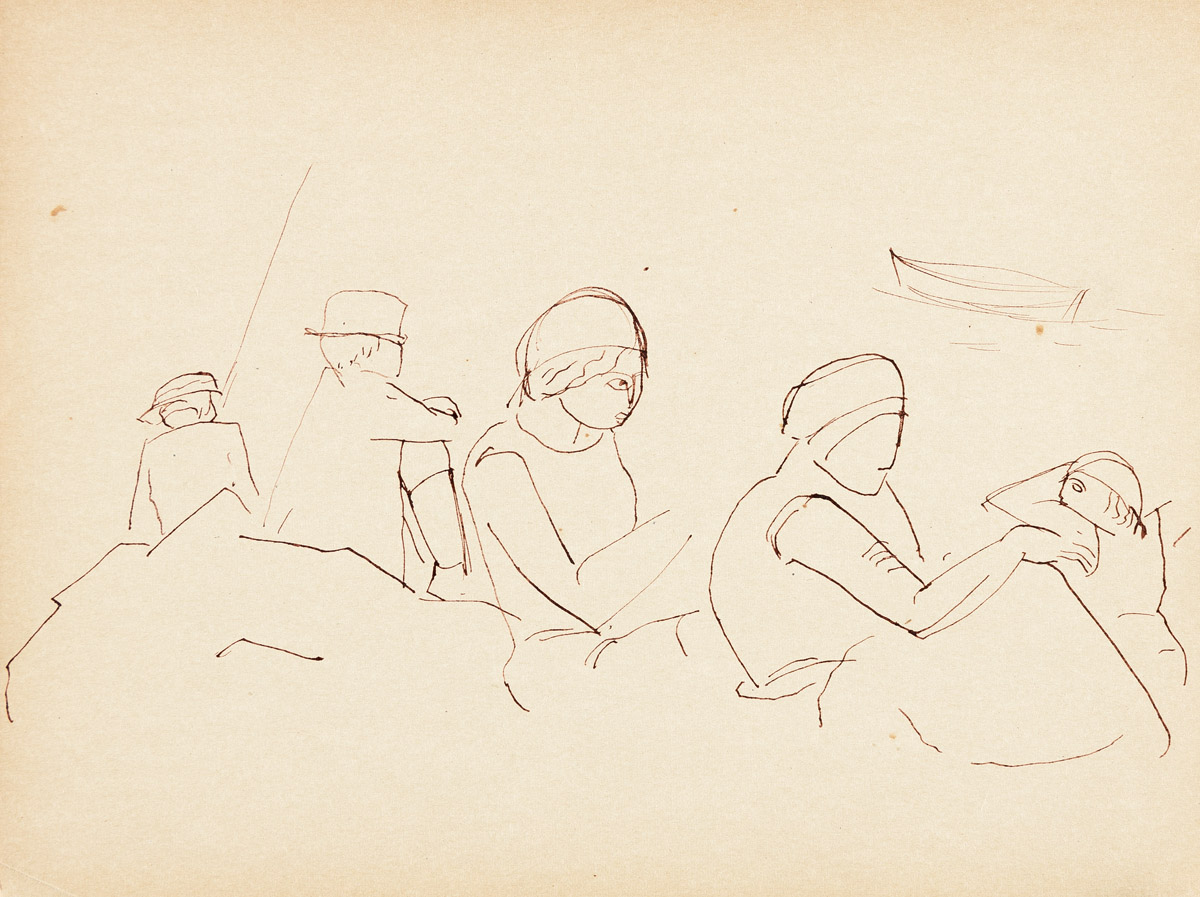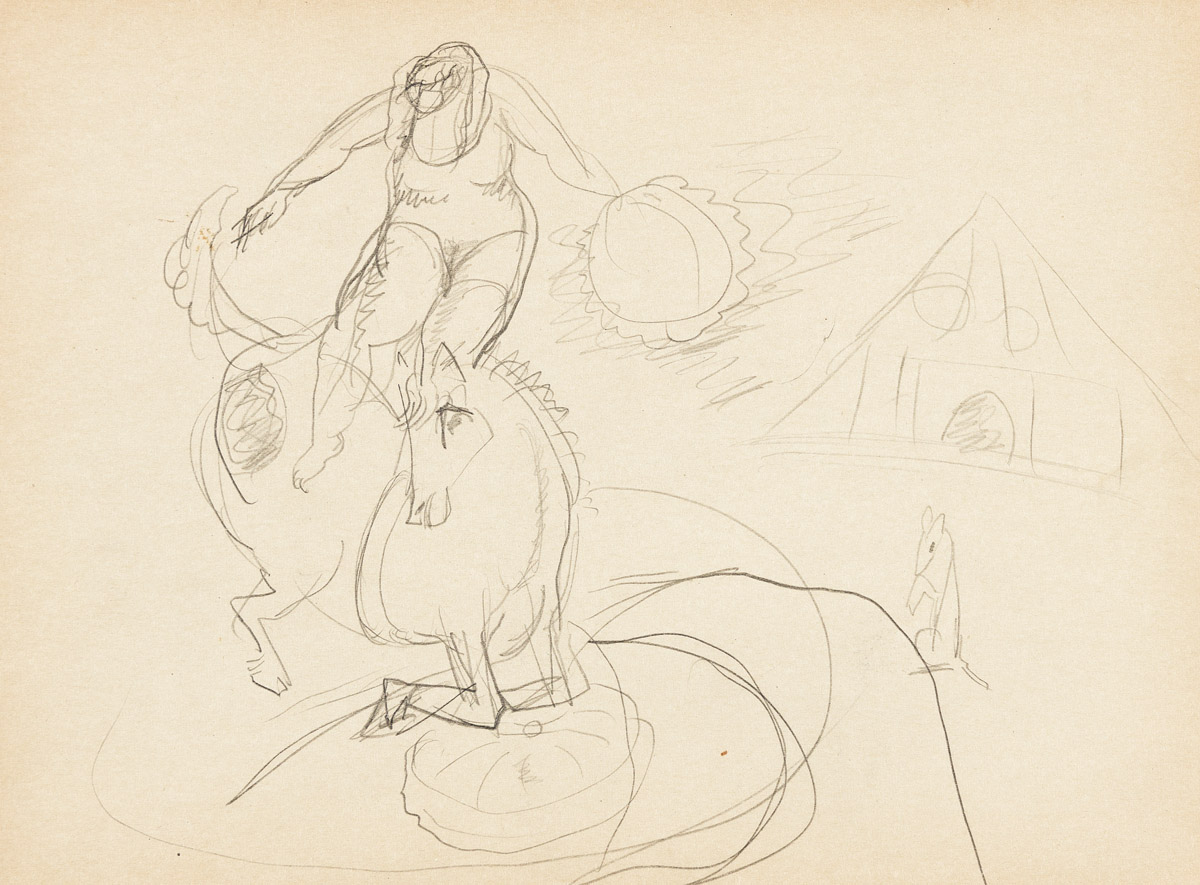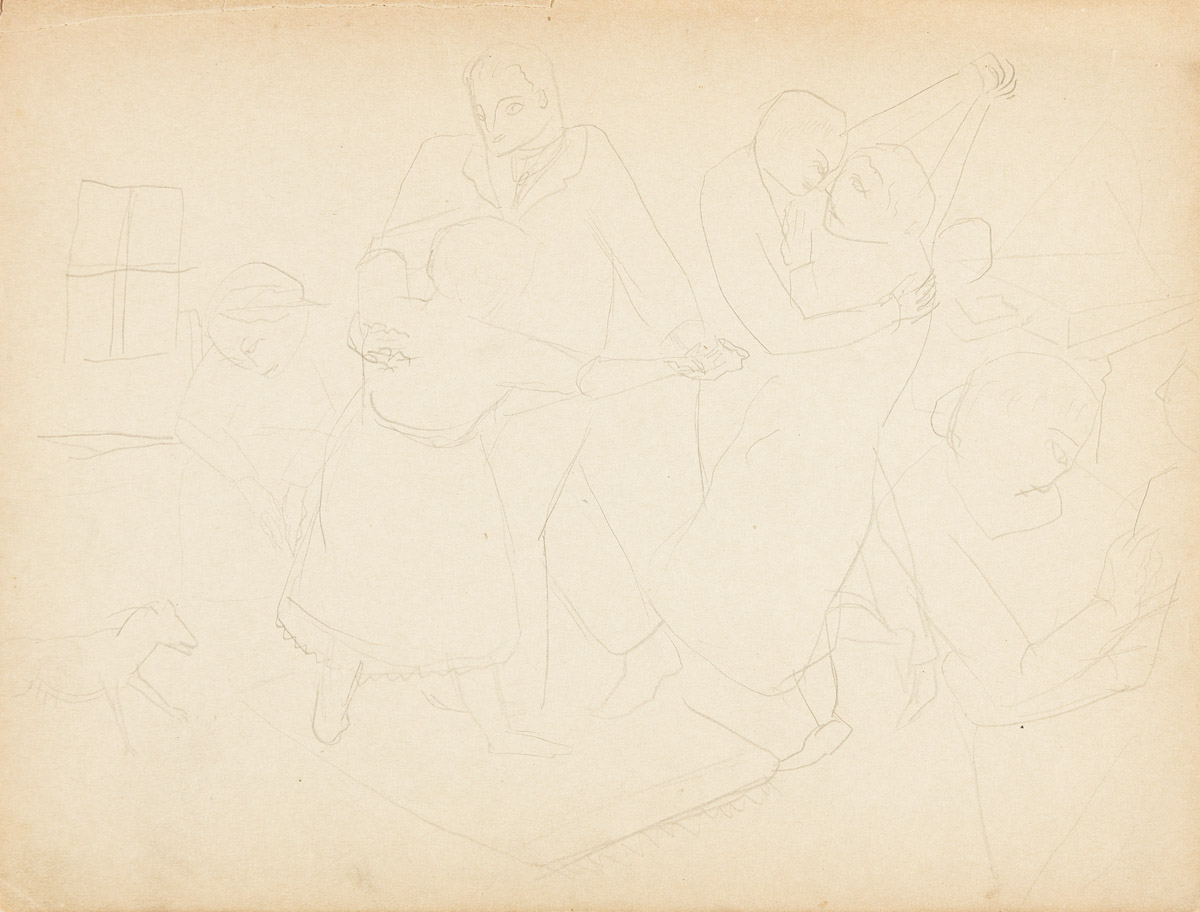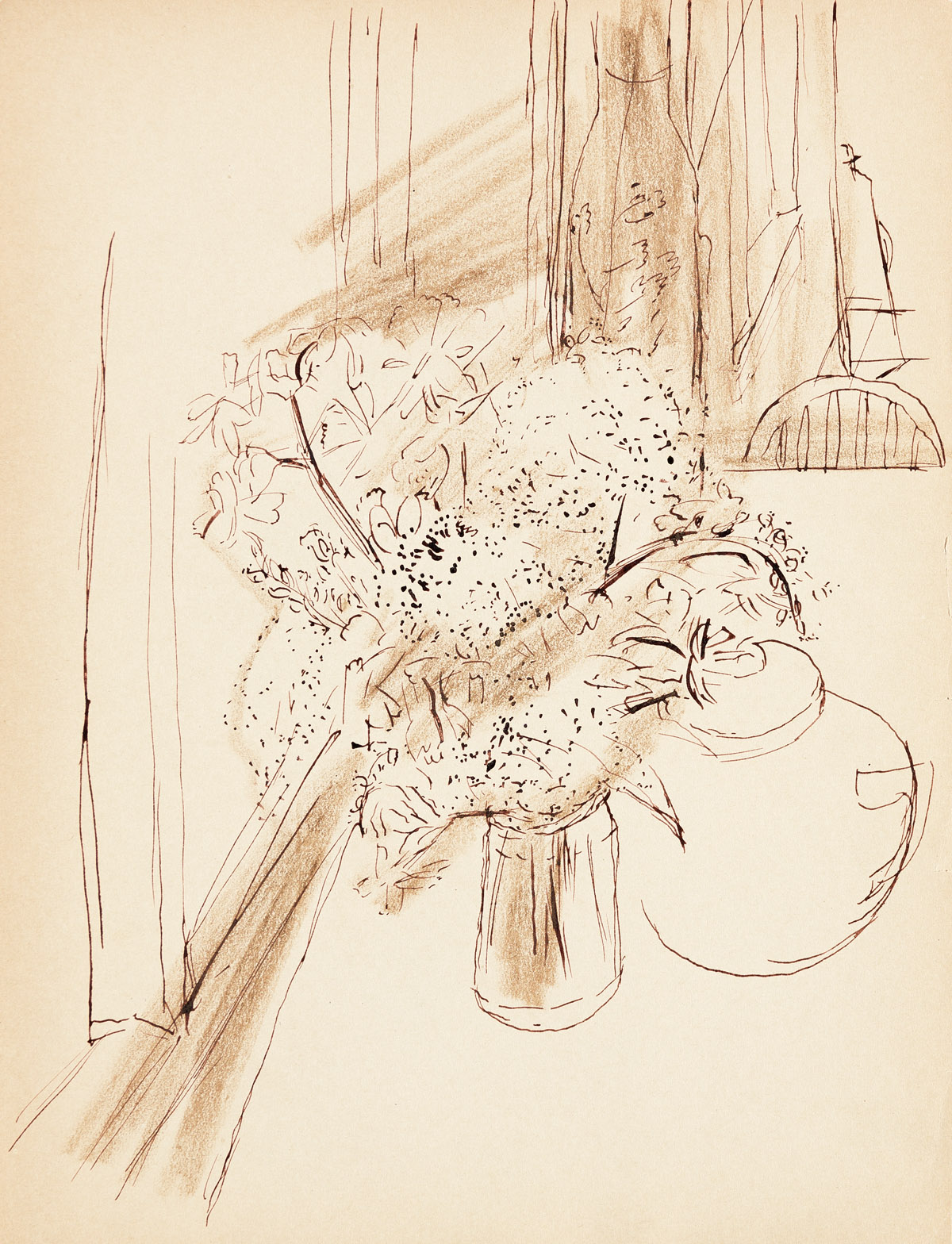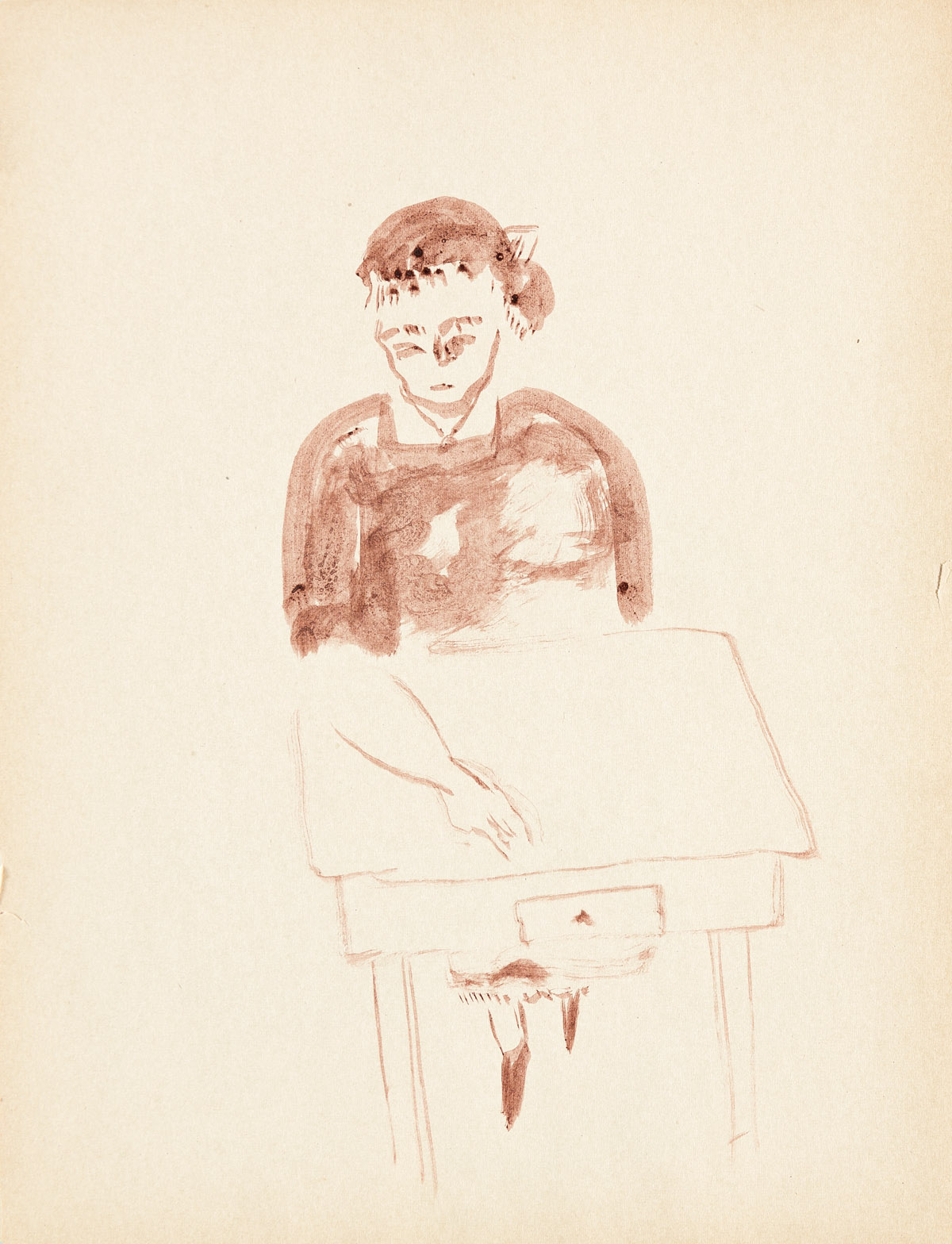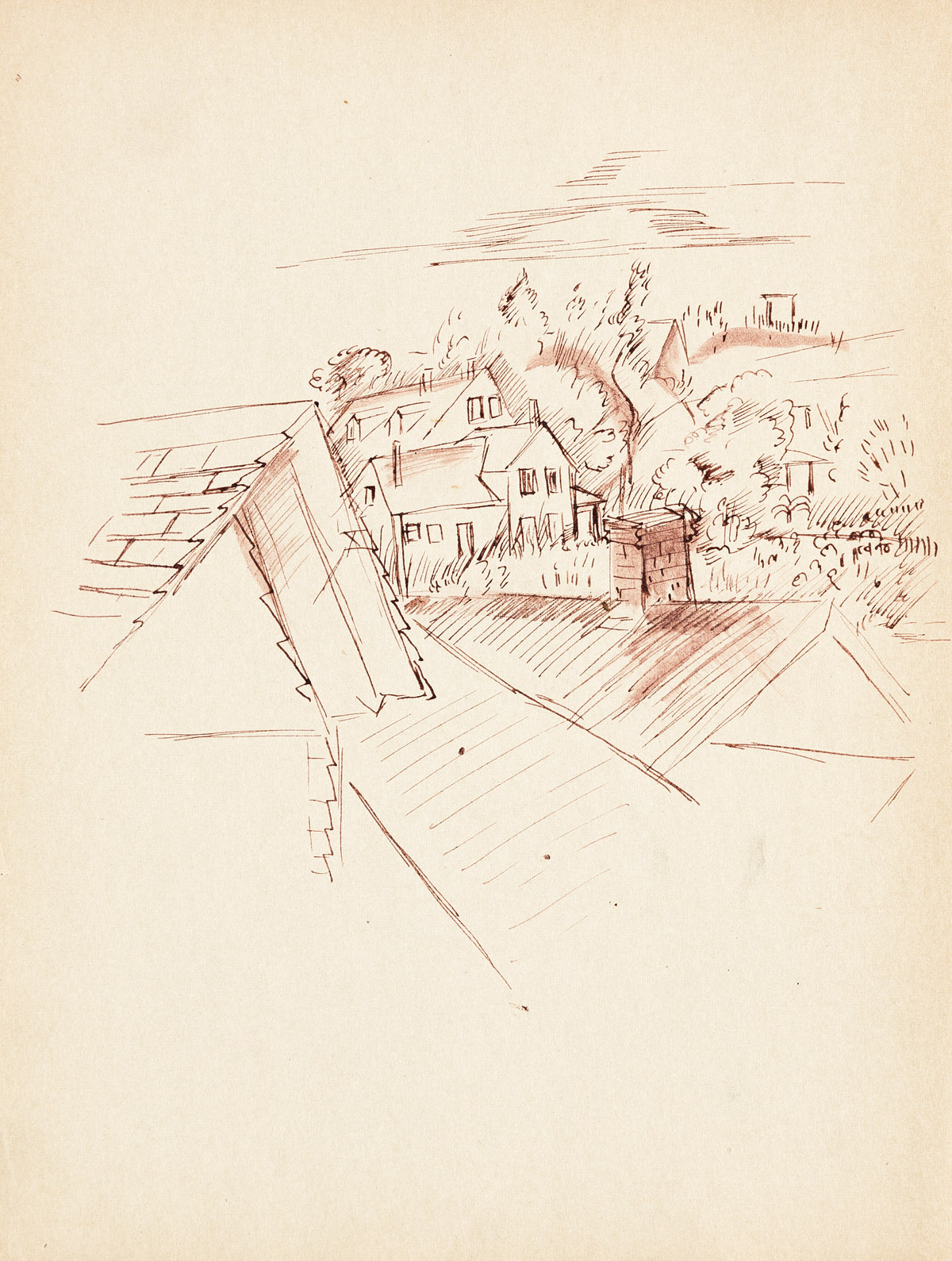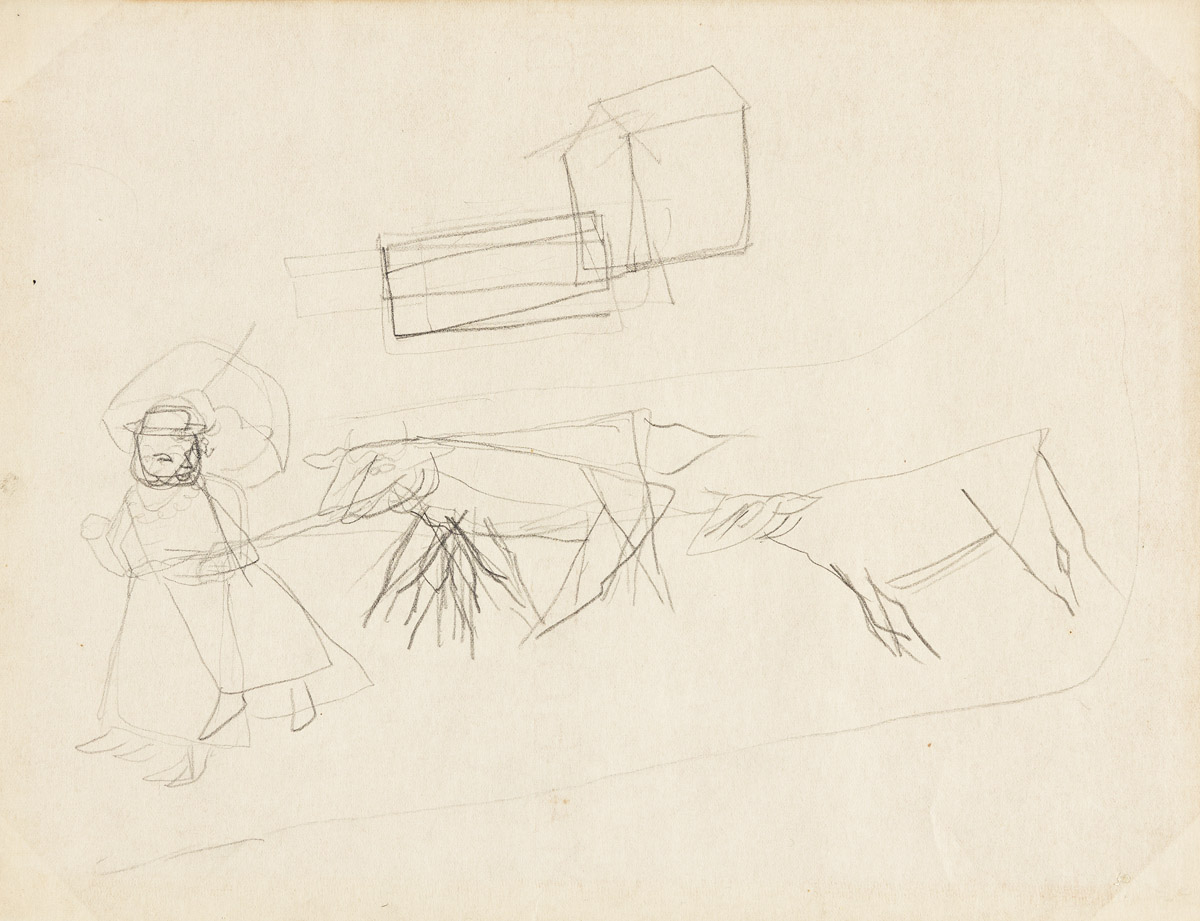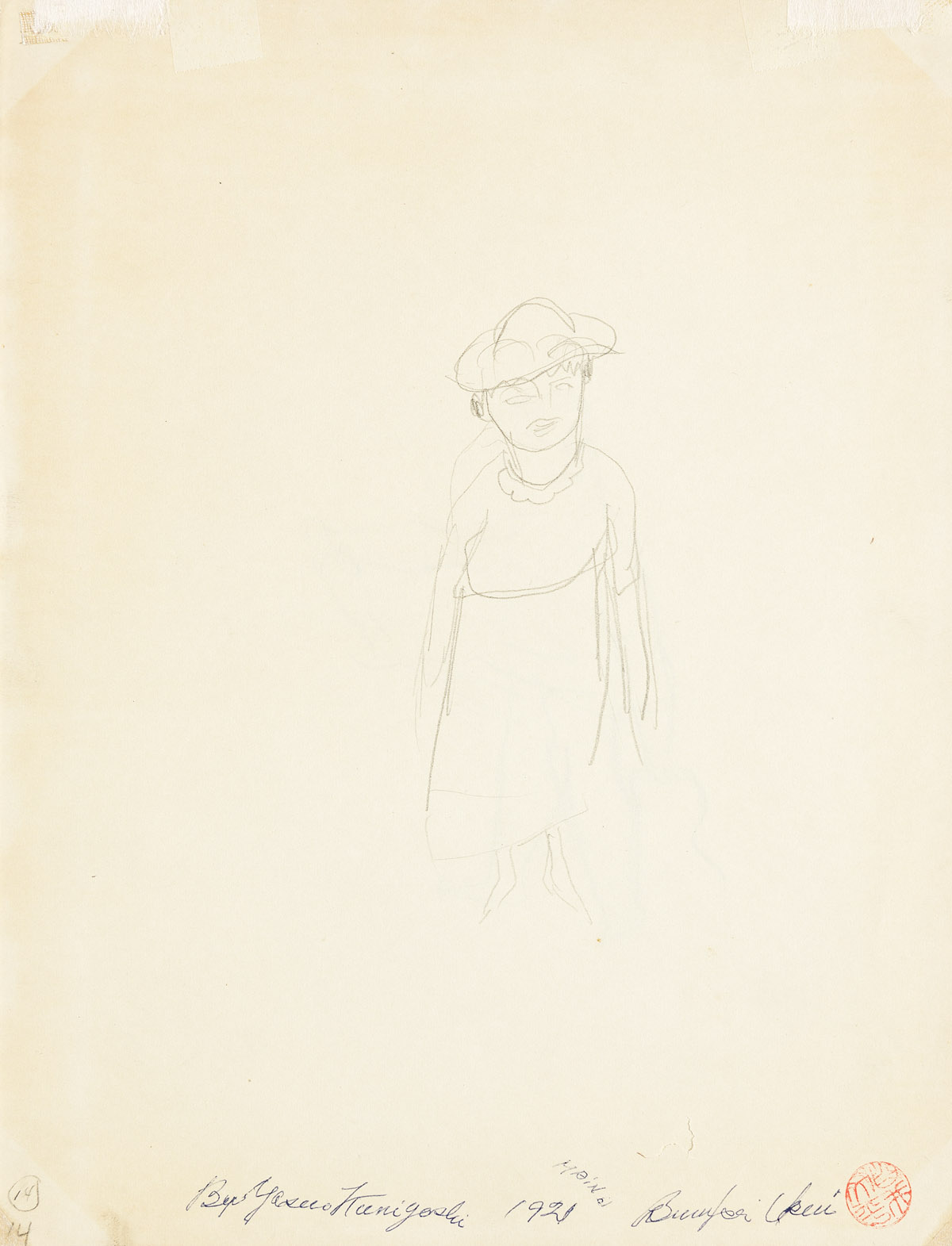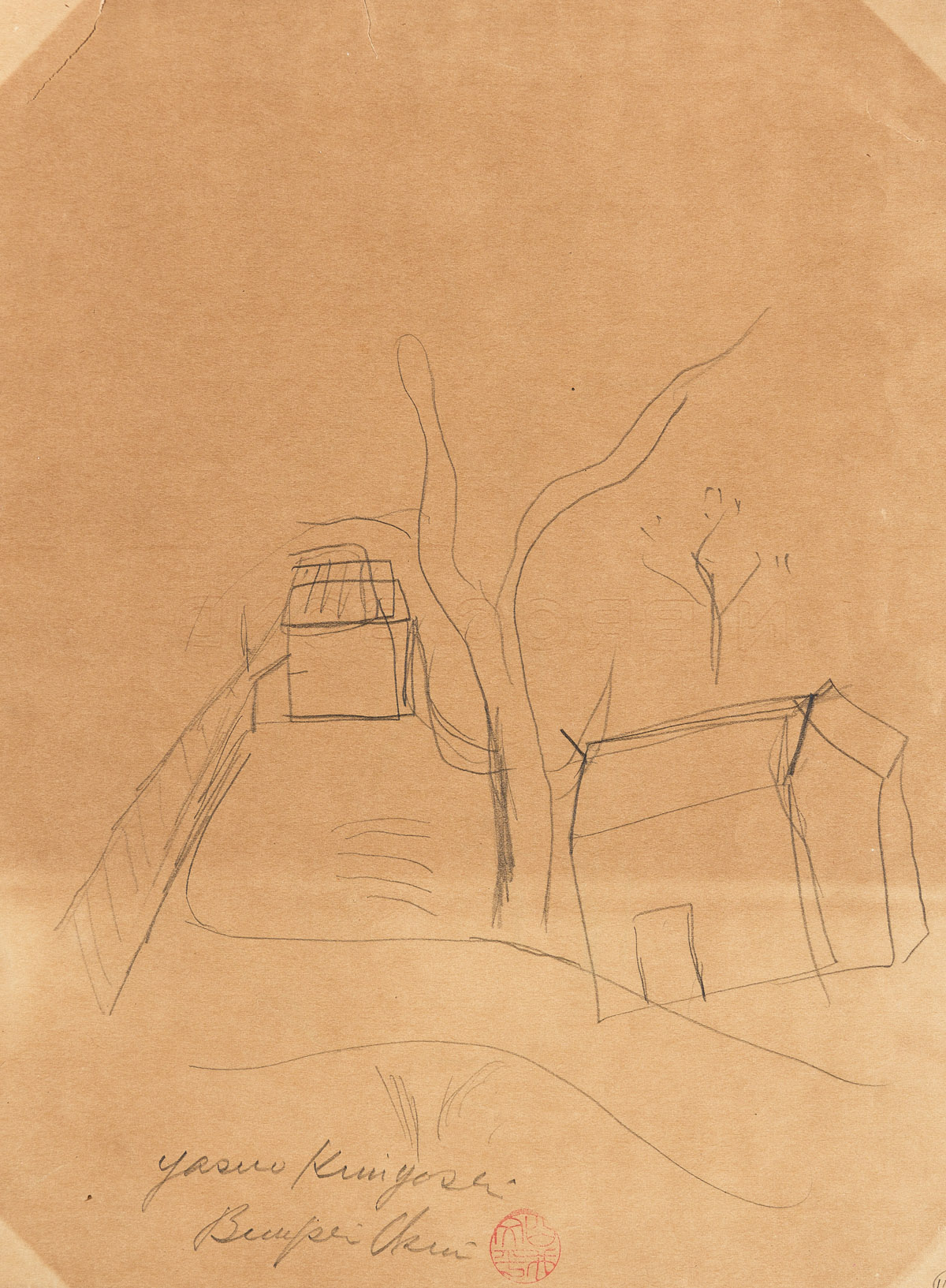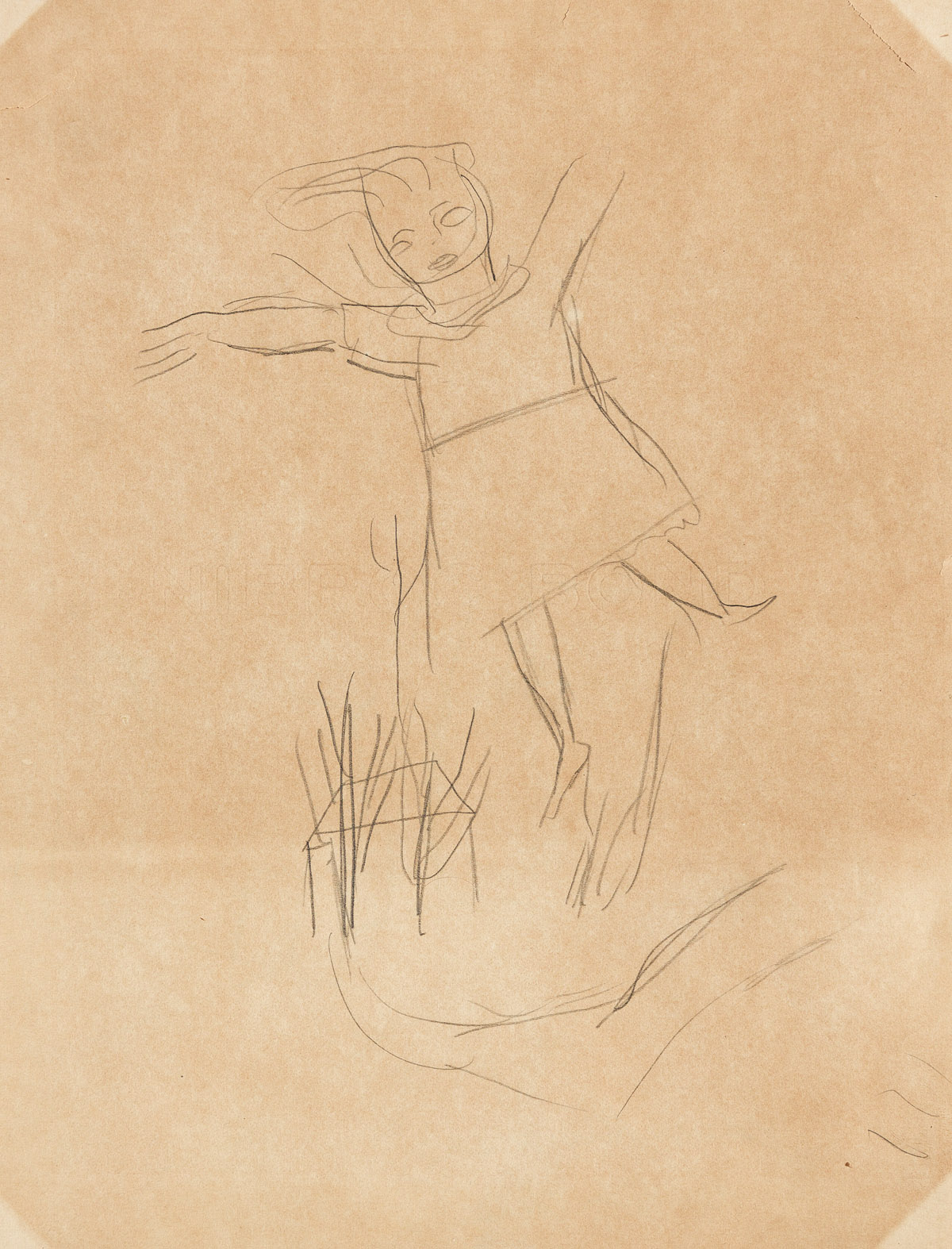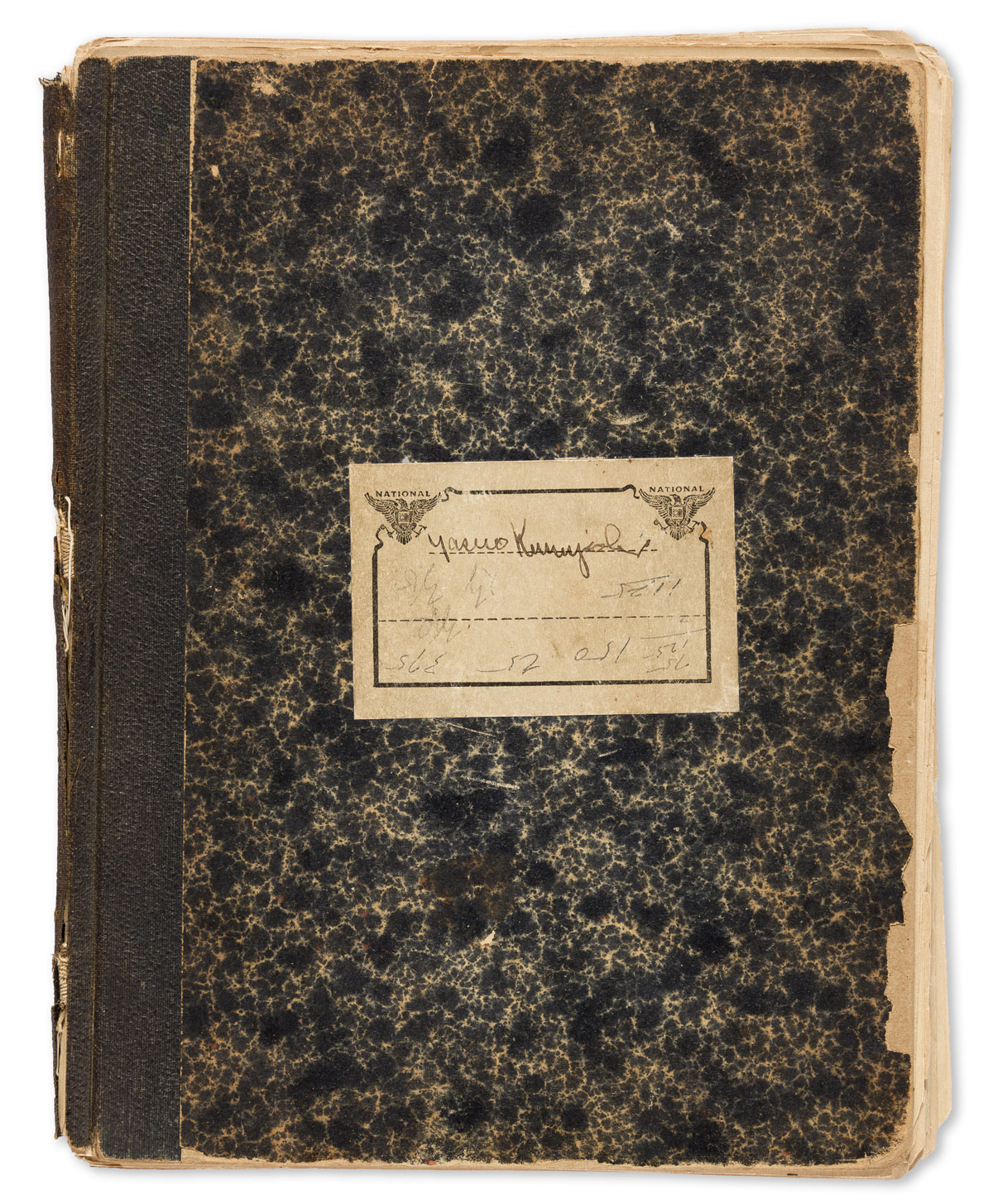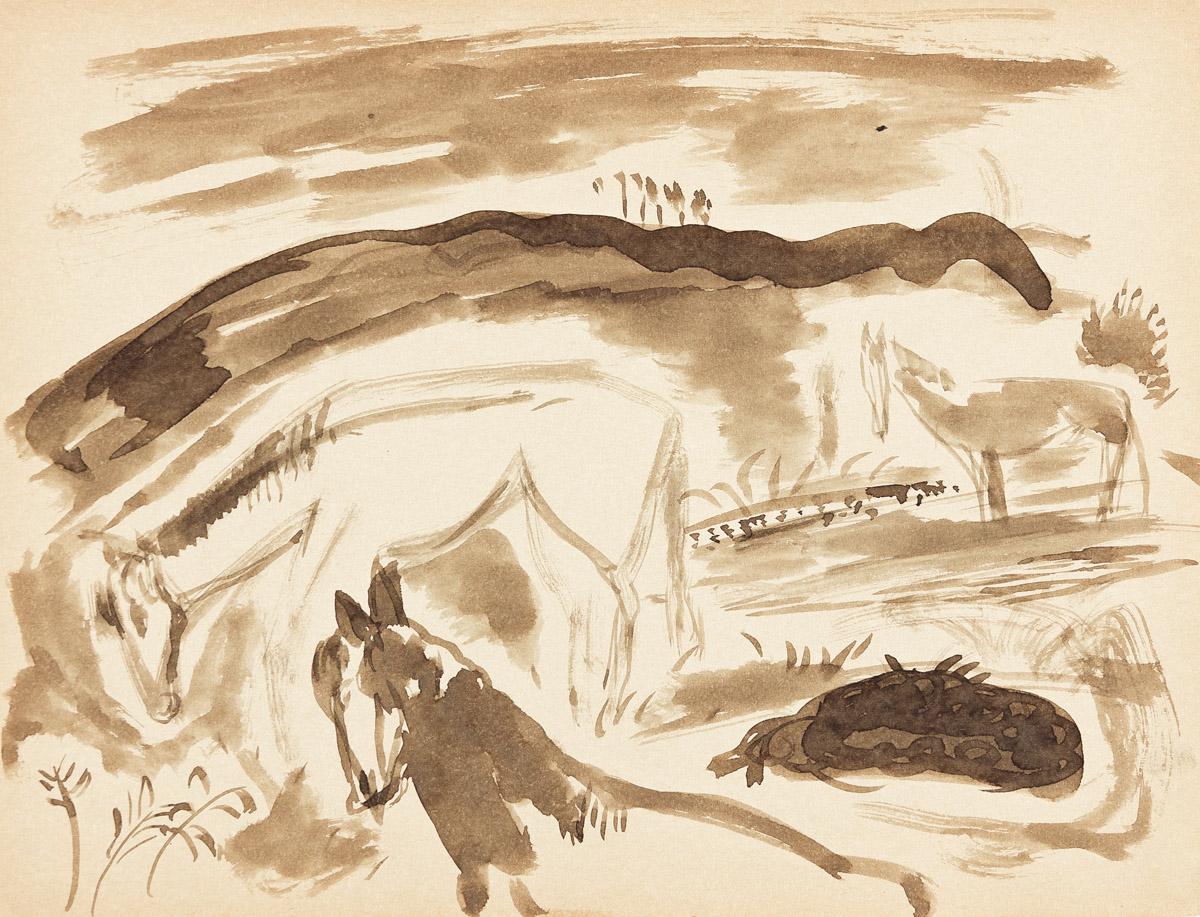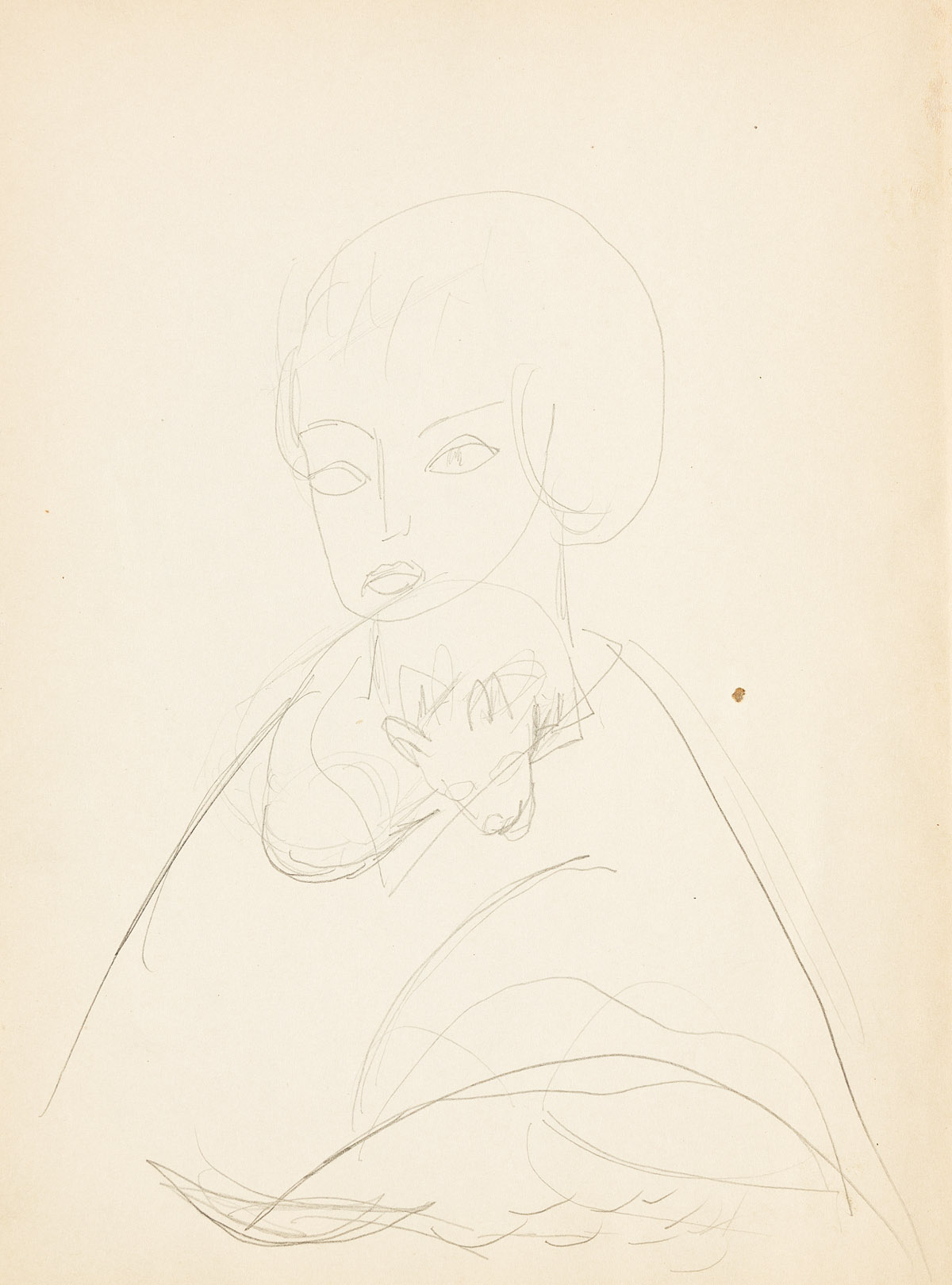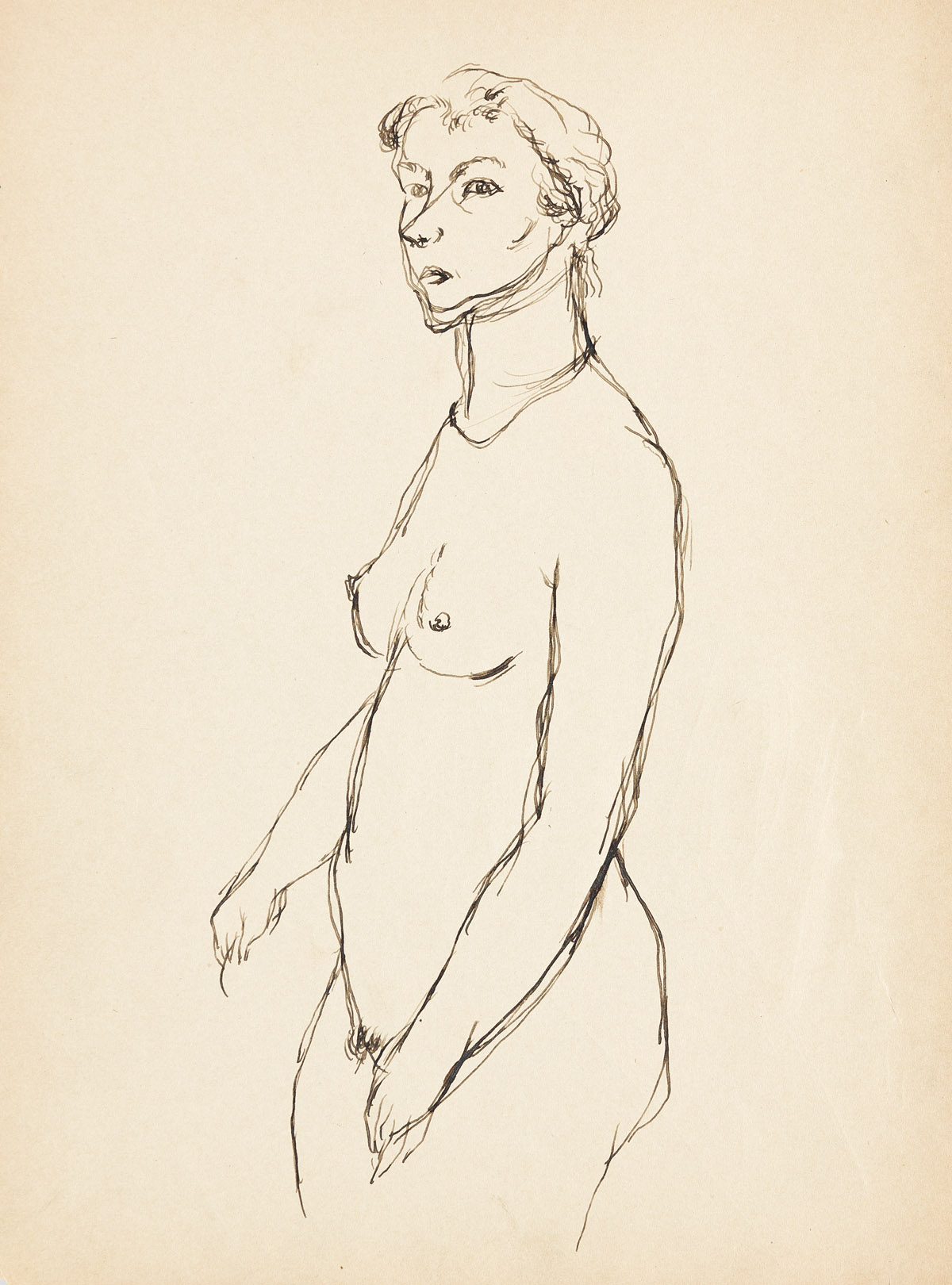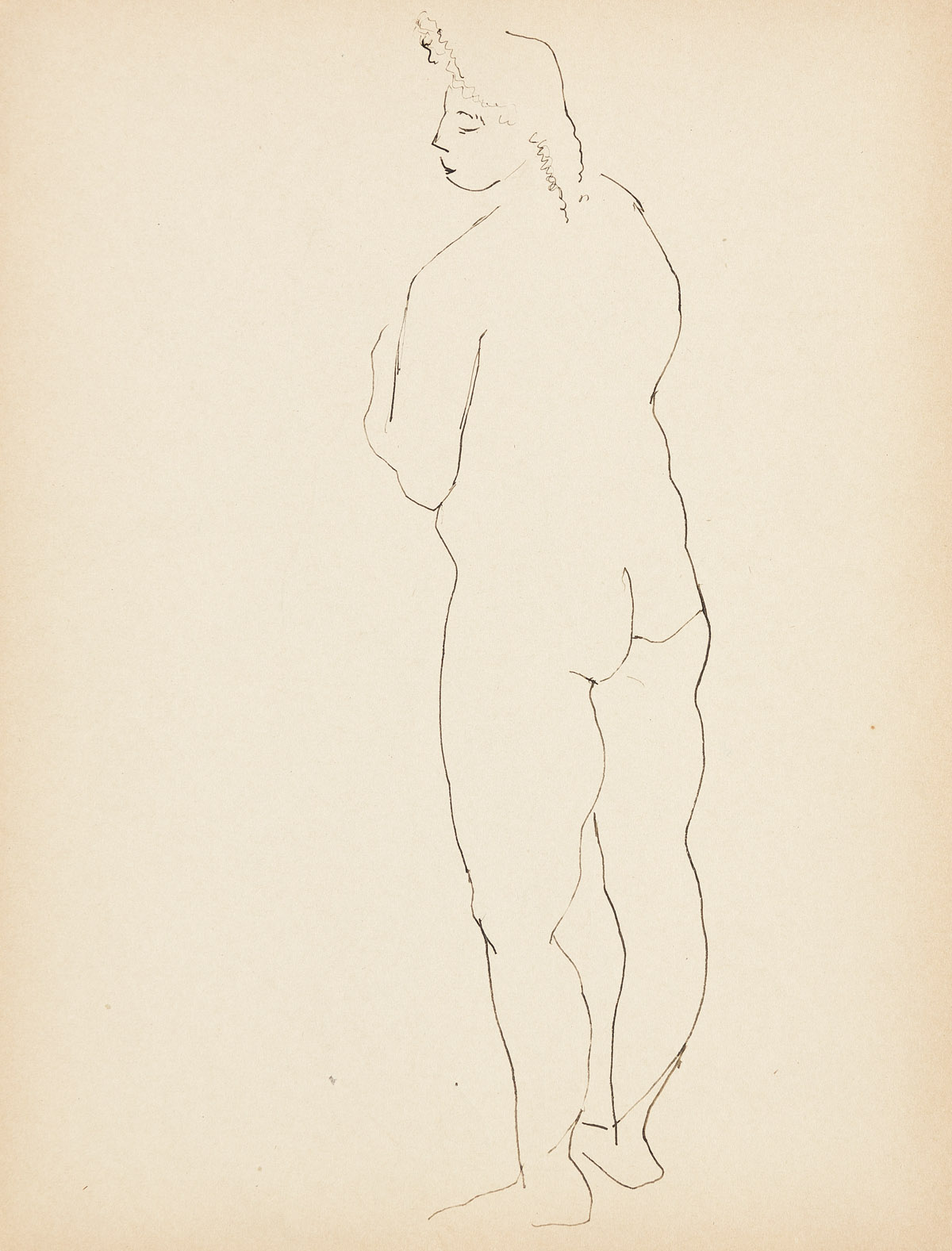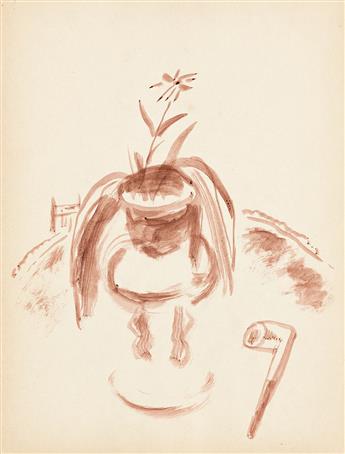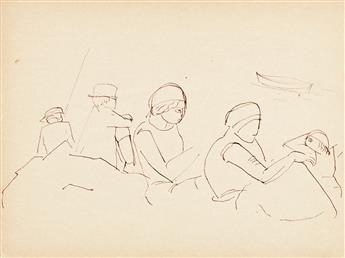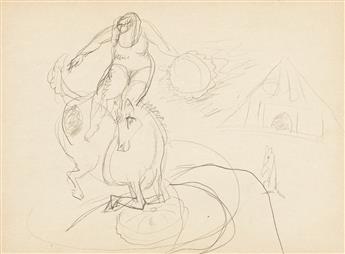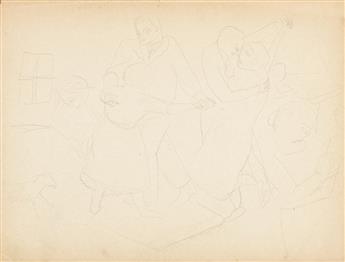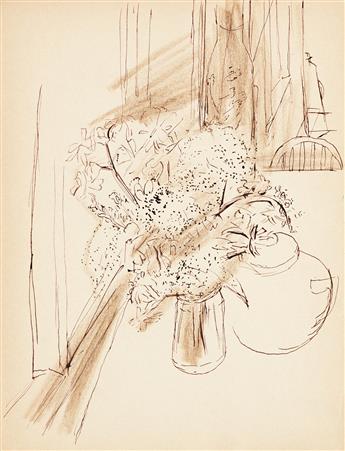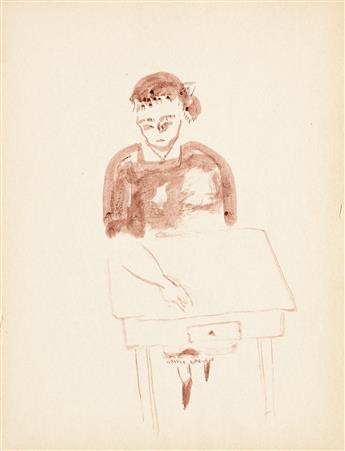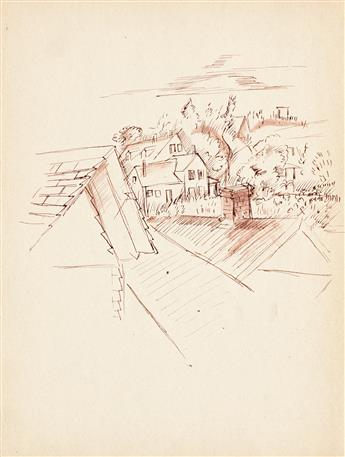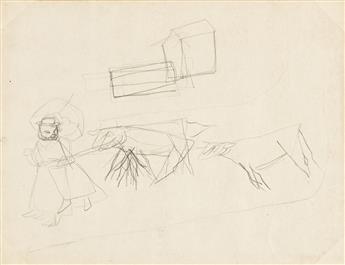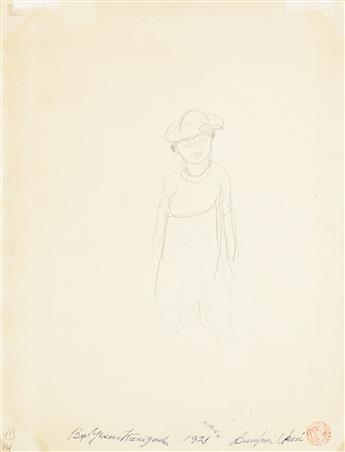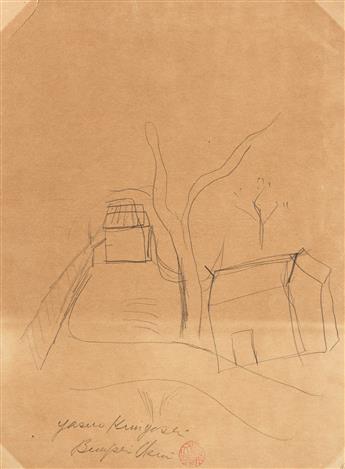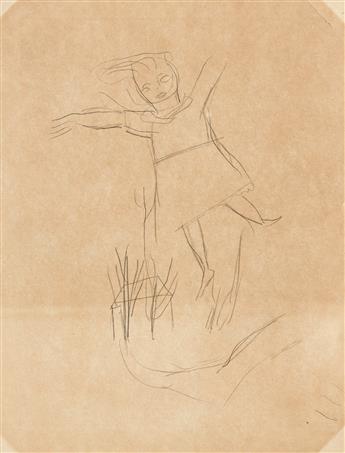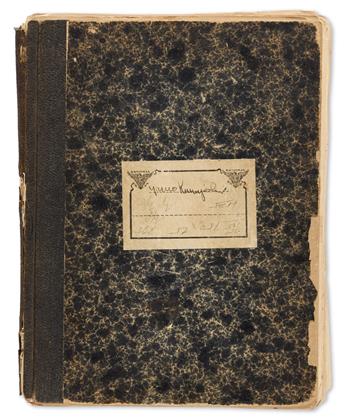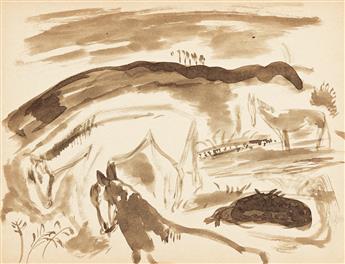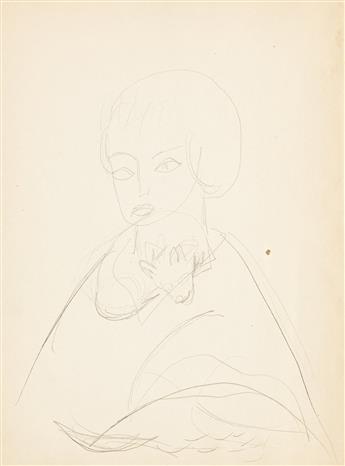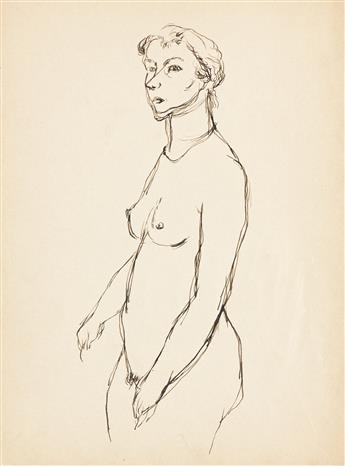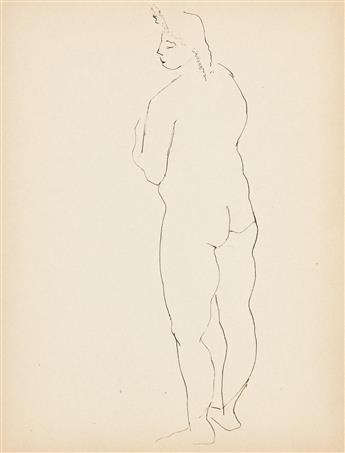Sale 2611 - Lot 159
Unsold
Estimate: $ 5,000 - $ 8,000
YASUO KUNIYOSHI
Sketchbook with drawings.
Sketchbook with 79 drawings in pencil and ink on 41 sheets, 1920-30. 255x195 mm; 10 1/8x7 3/4 inches (sheets). The front cover signed in ink
With—An additional seven pencil drawings on four sheets, 1920-30. Each 280x215 mm; 11x8 1/2 inches. Each inscribed with the artist's name and signed by Bumpei Usui, friend of the artist in pencil or ink, with his red ink chopmark.
Provenance: Collection of the artist Mr. Bumpei Usui (1898–1994); private collection, Tokyo.
After arriving in the United States in 1921 and settling in New York, Bumpei Usui started out as a framer for Reginald Marsh (1898-1954) and Kuniyoshi (1889-1953) while establishing himself in the art world as a painter. Kuniyoshi became Usui's informal mentor and the two had a deep friendship throughout their lives. Usui's 1930 oil on canvas portrait of Kuniyoshi is held by the Smithsonian American Art Museum, Washington, D.C.
Born in Okayama, Japan, Kuniyoshi attended the Los Angeles School of Art and Design before moving to New York to ultimately study at the Art Student's League from 1916-20 (he briefly studied also with Robert Henri at the National Academy). He began to exhibit with the Penguin Club, an informal artists group founded by Walt Kuhn in 1917 to rebel against the stringent National Academy, which counted Guy Pène du Bois, Arthur B. Davies, Edward Hopper, Jules Pascin, Joseph Stella and Max Weber as its affiliated artists. Though short lived, the club was only active until 1920, it sponsored social events, exhibitions, auctions and sketch classes. Kuniyoshi remembered, "This small but fertile group helped establish the roots of contemporary American painting. Considered the rebels of their time, they waged a vigorous battle against conservatism with might and humor. We knew how to play and enjoy ourselves in those days." This humor and playfulness are clearly evident in Kuniyoshi's works, though there is also a sense of political awareness. As in the present work, the appearance of newspapers signifies Kuniyoshi's reaction to contemporary violence and upheavals through the 1940s.
Finding success in New York, Kuniyoshi had his first solo exhibition at the Daniel Gallery and was soon exhibiting internationally in Europe and Japan through the 1930s. He travelled to Mexico in 1935 on a Guggenheim Fellowship and frequently summered in Woodstock, New York. Like several of his contemporaries, Kuniyoshi returned to the Art Students League as a teacher, a position that he would hold from 1933 to his death in 1953.
Sketchbook with drawings.
Sketchbook with 79 drawings in pencil and ink on 41 sheets, 1920-30. 255x195 mm; 10 1/8x7 3/4 inches (sheets). The front cover signed in ink
With—An additional seven pencil drawings on four sheets, 1920-30. Each 280x215 mm; 11x8 1/2 inches. Each inscribed with the artist's name and signed by Bumpei Usui, friend of the artist in pencil or ink, with his red ink chopmark.
Provenance: Collection of the artist Mr. Bumpei Usui (1898–1994); private collection, Tokyo.
After arriving in the United States in 1921 and settling in New York, Bumpei Usui started out as a framer for Reginald Marsh (1898-1954) and Kuniyoshi (1889-1953) while establishing himself in the art world as a painter. Kuniyoshi became Usui's informal mentor and the two had a deep friendship throughout their lives. Usui's 1930 oil on canvas portrait of Kuniyoshi is held by the Smithsonian American Art Museum, Washington, D.C.
Born in Okayama, Japan, Kuniyoshi attended the Los Angeles School of Art and Design before moving to New York to ultimately study at the Art Student's League from 1916-20 (he briefly studied also with Robert Henri at the National Academy). He began to exhibit with the Penguin Club, an informal artists group founded by Walt Kuhn in 1917 to rebel against the stringent National Academy, which counted Guy Pène du Bois, Arthur B. Davies, Edward Hopper, Jules Pascin, Joseph Stella and Max Weber as its affiliated artists. Though short lived, the club was only active until 1920, it sponsored social events, exhibitions, auctions and sketch classes. Kuniyoshi remembered, "This small but fertile group helped establish the roots of contemporary American painting. Considered the rebels of their time, they waged a vigorous battle against conservatism with might and humor. We knew how to play and enjoy ourselves in those days." This humor and playfulness are clearly evident in Kuniyoshi's works, though there is also a sense of political awareness. As in the present work, the appearance of newspapers signifies Kuniyoshi's reaction to contemporary violence and upheavals through the 1940s.
Finding success in New York, Kuniyoshi had his first solo exhibition at the Daniel Gallery and was soon exhibiting internationally in Europe and Japan through the 1930s. He travelled to Mexico in 1935 on a Guggenheim Fellowship and frequently summered in Woodstock, New York. Like several of his contemporaries, Kuniyoshi returned to the Art Students League as a teacher, a position that he would hold from 1933 to his death in 1953.
Exhibition Hours
Exhibition Hours
Aliquam vulputate ornare congue. Vestibulum maximus, libero in placerat faucibus, risus nisl molestie massa, ut maximus metus lectus vel lorem.



